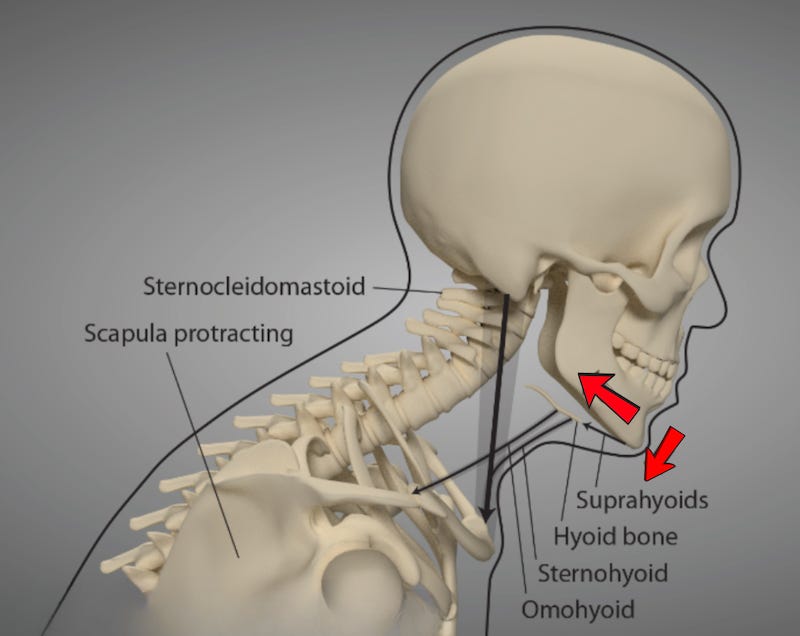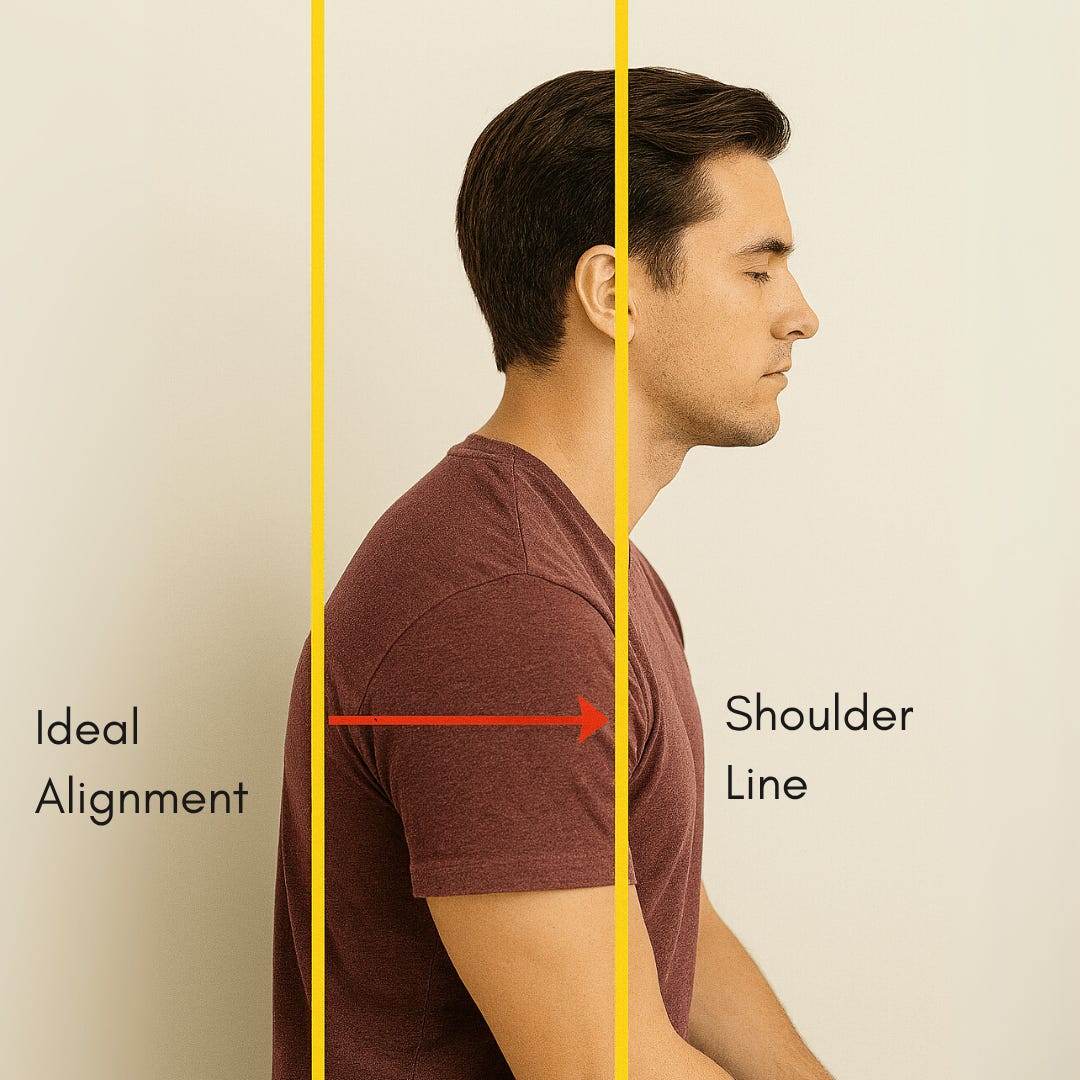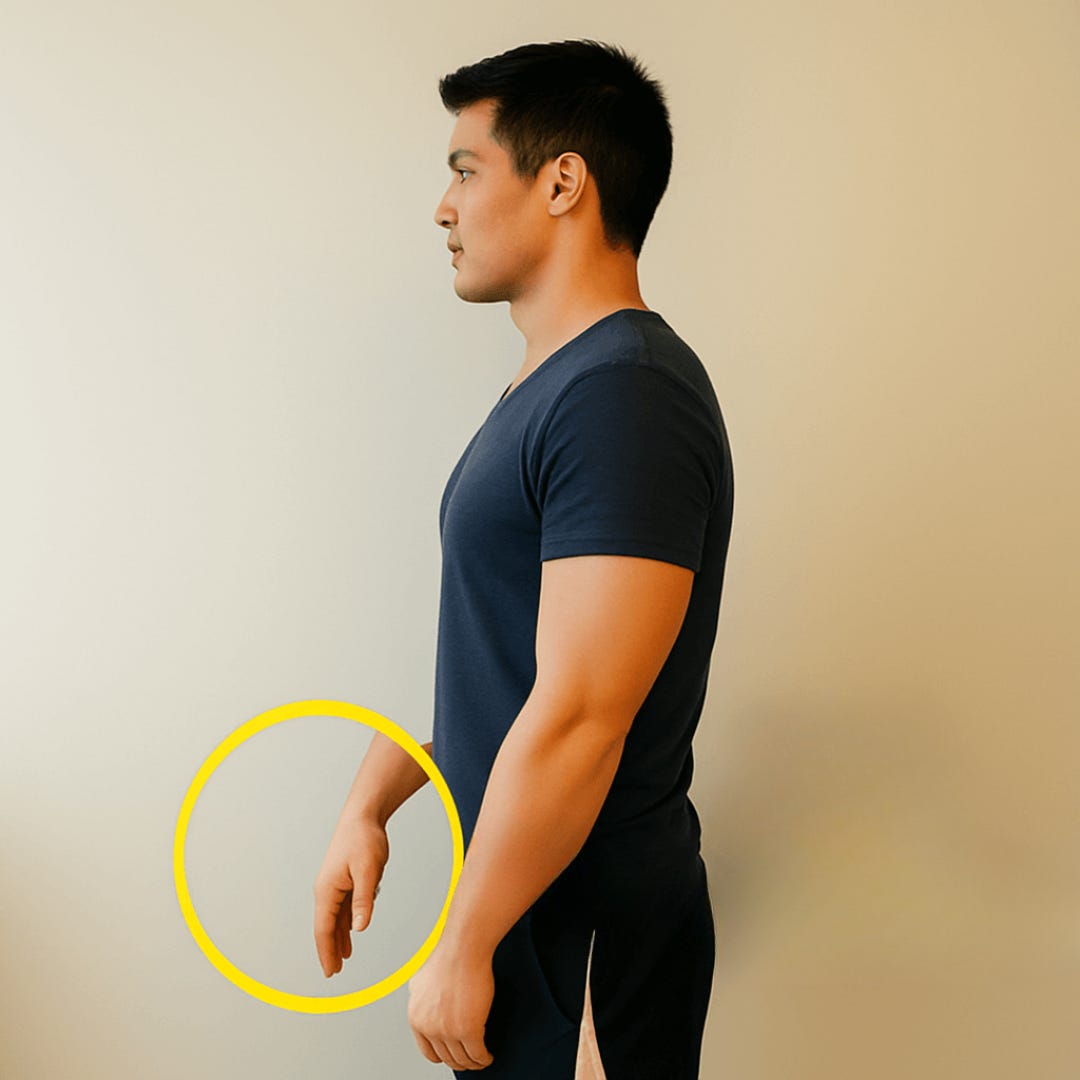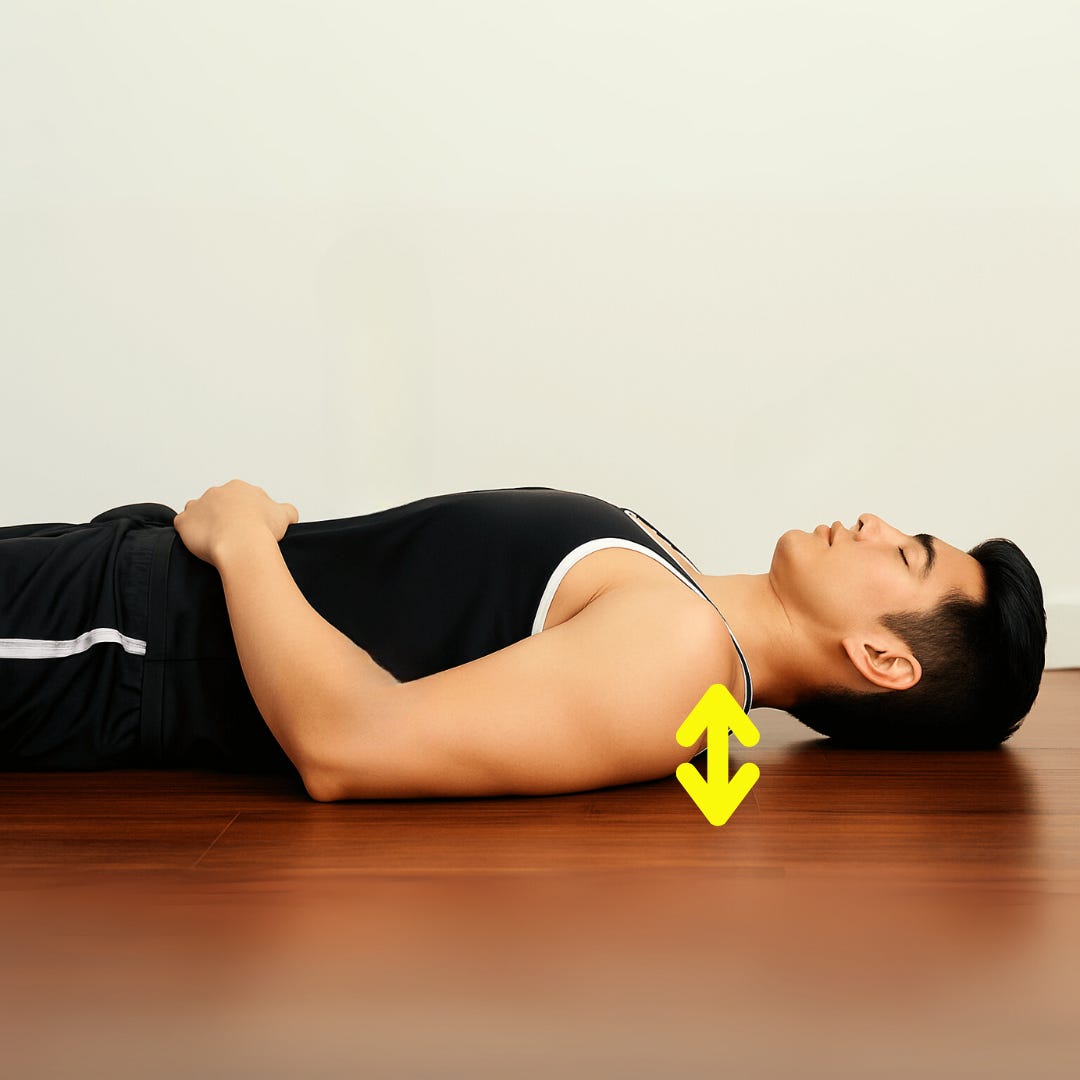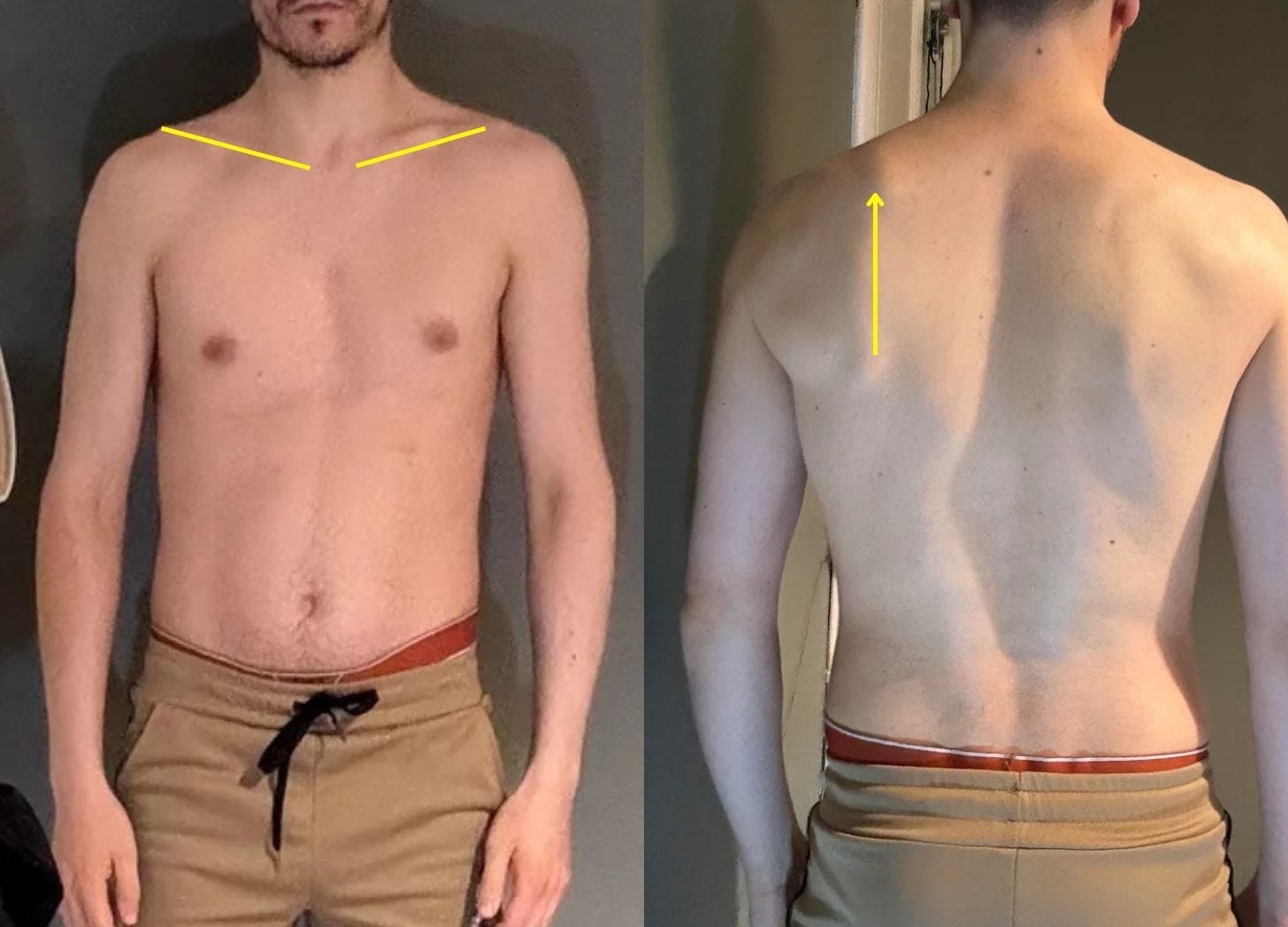How to Fix Rounded Shoulders
This blog gives you the most effective exercises and proven strategies to correct rounded shoulders at the root.
Rounded shoulders pull the shoulder blades forward and tilt the upper ribs inward. This causes the upper back to hunch and the head to jut forward.
As the head shifts, the cervical spine loses its natural curve, placing excess stress on the vertebrae and discs.
The neck muscles then tighten to support this misaligned position, compressing the cervical joints, reducing mobility, and increasing the risk of nerve impingement, chronic tension, and pain at the base of the skull.
If you feel tension in your neck, pain behind your shoulders, or stiffness when lifting your arms overhead, your brain may be locked into a faulty postural loop.
By the end of this post, you’ll see why your shoulders keep collapsing forward no matter how much you stretch or strengthen. You’ll learn the exact reset that targets the hidden sensory systems controlling shoulder and spine alignment. It’s not about pulling your shoulders back. It’s about fixing the inputs that keep pushing them forward.
Let’s break down the real cause of Rounded Shoulders and show you how to correct it from the source.
What Are Rounded Shoulders?
From a body mechanics perspective, rounded shoulders happen when your shoulders roll forward and your upper back begins to hunch. Instead of your shoulder blades resting flat on your back like they should, they tip forward and spread apart. This pulls your arms inward, collapses your chest, and shifts your head out in front of your body.
The muscles in the front of your shoulders and chest become tight and overactive. The muscles in your upper back and spine that are supposed to hold you upright become weak or shut down. Your neck loses its natural curve. The joints in your cervical spine get compressed. And your body slowly adapts to this position as “normal,” even though it’s anything but.
The Real Cause
The real cause goes deeper than just your posture. One of the most overlooked drivers of rounded shoulders is your jaw. Specifically, how your jaw sits in your skull. When the jaw is positioned too far back, it changes the entire shape of your head and neck alignment. People with this type of bite often have a recessed lower jaw and chin, which means the jaw sits further back than it should.
When that happens, the head has to shift forward to compensate. This is your body’s way of keeping your airway open and your eyes level. The forward shift of the head then creates tension down the neck and across the shoulders. Over time, this pulls your shoulders into a rounded position.
Rounded Shoulders may be associated with issues such as:
Chronic neck tension or stiffness
Pain at the base of the skull
Compression of cervical vertebrae and discs
Trapezius tightness or upper trap trigger points
Mid-back stiffness or pain
Rounded shoulders and winged scapula
Decreased shoulder mobility and impingement
Jaw tension or temporomandibular joint (TMJ) pain
Headaches (often starting at the base of the skull)
Numbness or tingling down the arms (from nerve compression)
Loss of natural cervical curve (cervical kyphosis)
A 2016 study published in the Journal of Physical Therapy Science investigated the effects of forward head posture (FHP) on forced vital capacity (FVC) and respiratory muscle activity.
The study found that individuals with FHP had significantly lower FVC and forced expiratory volume in 1 second (FEV1) compared to those with normal posture.
Additionally, the study revealed that accessory respiratory muscle activity, particularly in the sternocleidomastoid (SCM) and pectoralis major, was reduced in the FHP group. These findings suggest that FHP can negatively impact respiratory function, potentially due to muscle weakness or imbalances.
4 Quick Ways to Test If This Is You
These take less than a minute:
1. Side Photo
Snap a photo of yourself from the side. Do your shoulders sit ahead of your midline?
→ That’s a sign of a forward shift in your upper body.
2.Palm Position Test
Stand naturally. Do your palms face your thighs or turn inward?
→ Inward = internal rotation and protraction.
3.Lying Shoulder Contact
Lie flat on your back. Do your shoulders touch the floor?
→ If not, they’re likely pulled forward off the ribcage.
4.One Shoulder Forward?
Face a mirror. Is one shoulder more forward than the other?
→ That’s often a rotational pattern driven by visual or jaw asymmetry.
If your shoulders always feel tight no matter how much you stretch, the
5-Minute Posture Fix gives you the exact reset to release that constant
tension from the source. It’s not about forcing your body into position.
It’s about finally giving it the input it’s been missing.The 5-Minute Reset to Fix Rounded Shoulders
Step one is to reset the tongue posture using a Functional Activator. This helps bring the jaw forward and into better alignment, which takes pressure off the neck and helps the shoulders naturally open up. Step two is to address the feet using Therapeutic Insoles. If your head has been shifting forward for years, your feet have adapted to that imbalance. Correcting foot input restores proper alignment from the ground up and helps your body find a more stable, upright posture.
We reset posture from the brain down. No excessive stretching. Just smart inputs.





